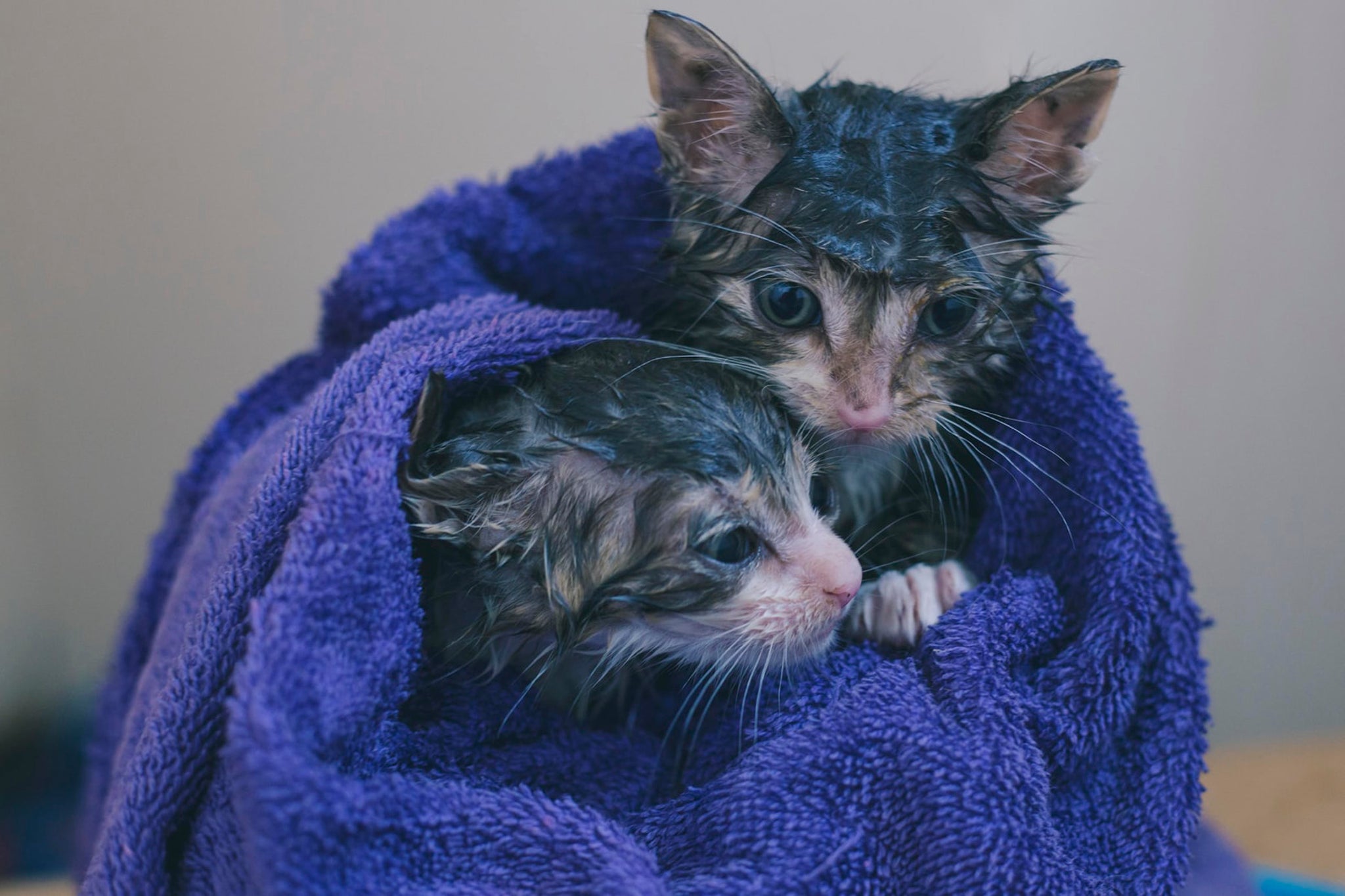No cat enjoys bath time. Yes, cats are equipped with barbed tongues as built-in grooming tools, but certain circumstances call for additional cleaning.
When to Bathe
- Cats exposed to external parasites or excessive dirt may require a bath.
- Older or obese cats may have trouble cleaning their whole body, so a bath can help.
- Long haired cats may also need more assistance with grooming.
- Hairless cats may need periodic baths to eliminate oils that hair normally absorbs.
- Baths can help to reduce dander for family members with allergies.
How to Bathe
- Time the bath when your cat is most calm. Playtime may help tire them out.
- Trim their nails before bathing if you anticipate your cat trying to scratch you.
- Brush your cat to help with matted hair.
- Gently insert cotton balls into their ears to prevent water from getting in.
- Place a rubber mat in the sink or tub to help your cat from slipping.
- Close the door to the room you’re in to prevent them from escaping.
- Place your cat in the sink or tub and fill it with a couple inches of lukewarm water.
- Use a spray hose with low water pressure to wet your cat but avoid spraying directly in their ears and face.
- If you do not have a spray hose, pour water from a cup.
- Praise your cat throughout their bath to keep them calm.
- Gently apply a cat-safe shampoo to their whole body, avoiding their ears and face. Cats have extremely thin skin and human shampoo can quickly dry it out.
- Rinse out the shampoo thoroughly and check for any remaining dirt or debris.
- Use a washcloth with only water on it to wash their face.
- Dry your cat with a towel. If you are brave, you may use a blow dryer on low, but the odds of your cat enjoying the noise are slim. Keep your cat inside until they are completely dry.
- Brush your cat after their bath, especially if they have long hair.
- Reward them with a treat, toy, or playtime to put them in a better mood after their dreaded bath.




